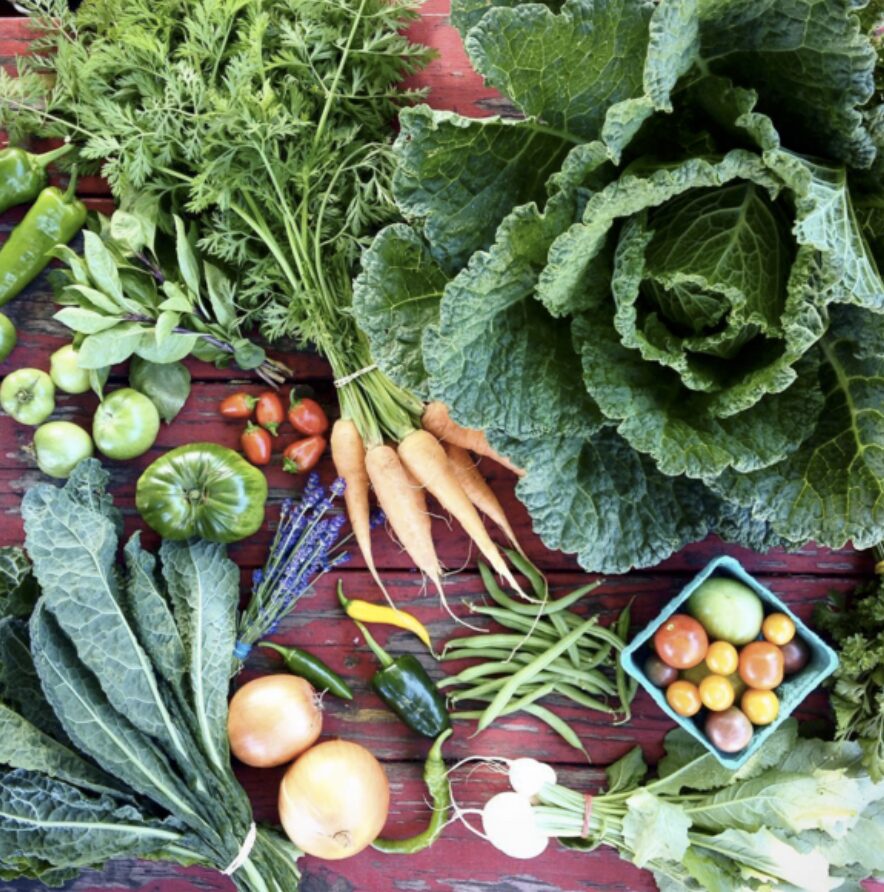
Make The Most of Your CSA Shares
Spring, summer and early fall bring the most delicious and delectable vegetables.
Produce harvested in its natural season is the most flavorful version of any vegetable you can get. And in most of the country, these seasons are short, so you want to take full advantage of these intensely flavored lettuces and greens, tomatoes, peppers and chilies, corn fresh from the field and more.
More and more of us are taking advantage of Community Supported Agriculture shares, where we, as consumers, help assume the farmer’s risk each season by paying for shares of these delicious and all-natural spoils. There are more than 2,500 CSAs in the United States and that number is growing, helping to sustain small farming in the U.S.
However, as with any great thing, there are also a not-so-great things. In the case of CSA shares, the not-so-great things are the vegetables you don’t know what to do with, like zucchinis, yellow and butternut squashes that you get in abundance, greens galore and even oddities like the rutabaga or turnips.
Whether you love these veggies or can leave them, we have some great ways to incorporate them into recipes to take full advantage of the fresh deliciousness these seasons have to offer.
Zucchini
Grate your zucchini, skin and all, on a box grater or by using the grater blade of your food processor. Pack the shredded zucchini flat in Ziplock bags and freeze it.
Use grated zucchini for latkes by combining with potato, onion, nutmeg, a little lemon zest, salt and pepper, and one egg. Sauté or bake them — either way, they’re delicious.
Add grated zucchini into pasta sauces like in a turkey bolognese for additional fiber. It’s great in in muffins, tea cakes and zucchini bread. It adds moisture to the mix, your kids will never know and will love it. We brought chocolate zucchini bread to school for our son’s 9th birthday and the kids raved about it. The teachers were also into it because it wasn’t an overly sugary treat.
Yellow Squash
Scrape out the seedy center and make it into a boat. Fill it with a mixture of couscous, chicken, pine nuts, currants, rosemary and shallots. Top it with bread crumbs and your kids will think it’s fun to eat.
Channel the movie character, Chef Remy (the rat) from “Ratatouille,” and make your own ratatouille with coins of squash, Roma tomato, eggplant and zucchini. Add Olive oil, thyme springs salt and pepper. You will always get your kids’ interest if you mention the rat chef.
Prepare medallions with seasoned breadcrumbs and make a squash parmesan layered with mozzarella and marinara sauce.
Dice it, toss it with olive oil and seasoning and roast it. The more caramelized, the better and don’t forget to season them with sea salt and endless herbs and spices for variety.
Butternut Squash
If you peel and dice butternut squash and roast it, you can put it in several meals. We like a roasted butternut squash in a salad almost like a crouton that adds a bite of sweetness. Our favorite is a roasted butternut squash and kale salad with pickled red onions and spiced pepitas. Crumble a little feta and it’s awesome with an apple cider vinaigrette.
Cut it into coins and roast it. You can layer it in casseroles for freezing.
Roast and puree your squash, like you would plain potatoes. It’s a healthier option and more nutritious as a side dish.
Turnips
We love Turnips and love to roast them.
It’s popular in Southern California to shave it very thin and do a light pickle with either distilled white vinegar or rice wine vinegar sugar, salt onions or garlic and whatever herb or spice you want to use. It is so good in salads — it has a radish-y flavor, or on tacos.
Chop it and boil it and add it to potatoes when you puree or mash them. It’s adds a lot of flavor like a celery root would.
We make a great soup with it. You cook the Turnips in chicken stock with mirepoix until it’s tender and then blend it. Add a little coconut milk, and curry or kaffir lime leaves. It’s healthy and tasty and can be frozen easily to pull out for a quick dinner.
Greens
Immediately wash your greens, chop them and freeze them for later. You can put handfuls in smoothies, sauces and soups. That way, you’re using it up before it goes bad and you don’t have a bunch of slimy kale and Swiss chard in your fridge.
Wash the leaves and keep them flat to use for “wrappers.” We like to fill them with ground dark meat turkey or chicken and then roll them up and freeze them in the rolls. When you’re ready to eat them, cover them in marinara sauce and and bake.
Because the meat is so lean, it gives you license to put cheese on top and make what seems like an unctuous, rich dinner but it’s really healthy.
Line a ring mold with blanched leaves and fill it with bbq short ribs or brisket. Fold over the leaves and you have this perfect little hockey puck. In traditional French cooking, a Crepinette would be wrapped in caul fat and sautéed to melt the fat. We serve it with a watermelon and corn bread salad for a very fancy take on a backyard barbecue.
Wrap a meatloaf with Swiss chard leaves. The colorful veins are beautiful and help retain moisture for the loaf.
Pickles
Pickling is the quintessential catch-all — you can pickle anything with a basic brine. We have a constant rotation of pickles happening here and they’re great on sandwiches and salads.
Beyond the obvious cucumbers, carrots, onions and fennel, I love pickling the stems of rainbow Swiss chard. They are delicious chopped and salad. They last for months and they look really pretty too with their reds and bright yellows.